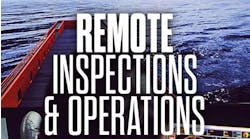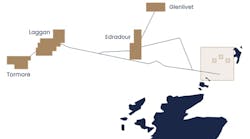Subsea technology is evolving quickly to cope with the growing needs of the oil and gas industry and oceanography. AUVs are going to play increasingly important roles ranging from needs such as the introduction of increasingly complex and automated subsea production systems to surveillance of protected marine areas and coastal zones.
To do this, a series of important ancillary accessories, such as the Underwater Service Station (USS), the LARS, the interfaces with the field installations, are going to be introduced in the field to make their operation easier, more efficient, and reliable.
General architecture of an underwater service station.
Recent progress in AUV control systems demonstrated the value of AUVs for object identification and for pipe tracking and surveying. AUVs can reduce overall campaign costs by enabling operations to be conducted from smaller, lower cost support vessels than required for ROV or towed systems.
One main limitation of AUVs, however, is range. Indeed, unlike tethered systems powered from their support vessels, AUVs must embark their own energy, and therefore have a limited coverage capability. The use of lithium batteries improved onboard energy storage, enabling AUVs to run missions as long as 12 and even beyond 24 hours. Other emerging technologies, such as fuel cells, were demonstrated on AUVs, with the Urashima, Hugin, and more recently Ifremer’s asterX vehicle, and further extend their range. Still, AUVs are in general followed at all times by a support vessel while performing their surveys, and are recovered on a daily basis onboard the ship, in order to download mission data, recharge batteries, and for maintenance operations.
Cybernetix has taken the autonomy of AUVs a step further, reducing the need for a support vessel to a minimum using the concept of a subsea docking station. As part of the SWIMMER system, such stations are installed close to subsea facilities and connected to a surface control room by means of an umbilical.
A hybrid AUV/ROV connects autonomously to these subsea bases, from which ROV-based IMR operations are performed, AUV-based inspections are launched, batteries are recharged, and mission data are downloaded to the surface control station. This, combined with improvements in vehicle reliability, enabled Cybernetix to promote the concept of subsea resident AUVs, capable of remaining subsea and in continuous operations for several months, without resurfacing for maintenance. Cybernetix and Total are collaborating on the implementation of a full-blown SWIMMER system on one of Total’s blocks in West Africa for 2014-2015.
Offshore Articles Archives
View Oil and Gas Articles on PennEnergy.com




